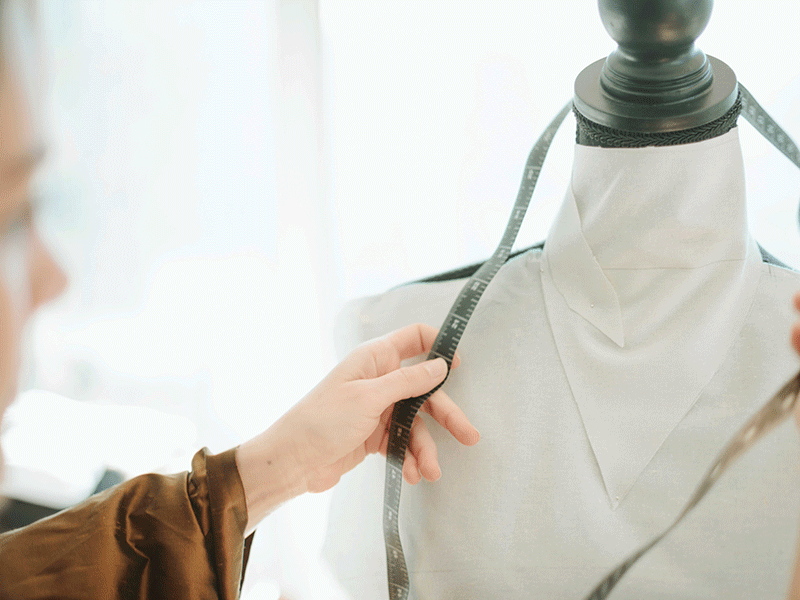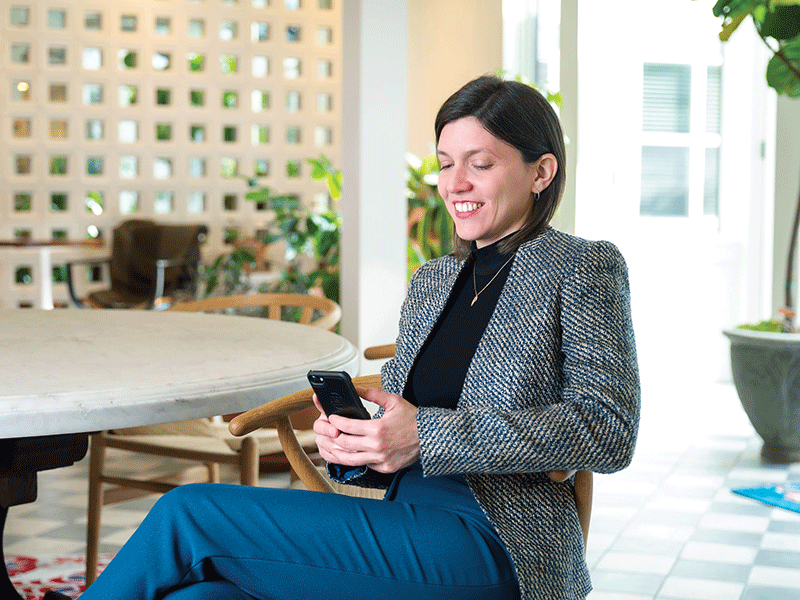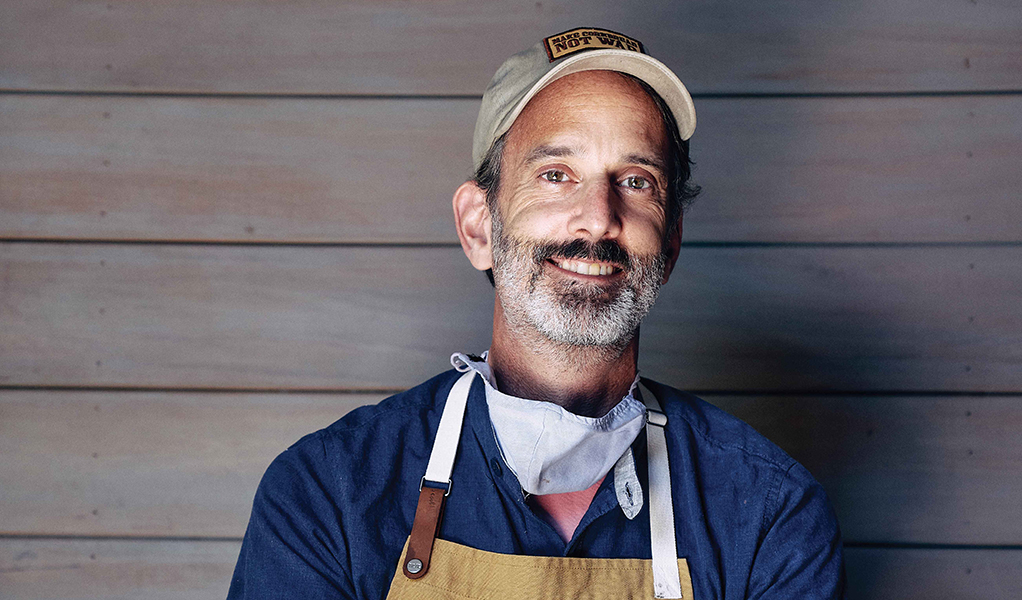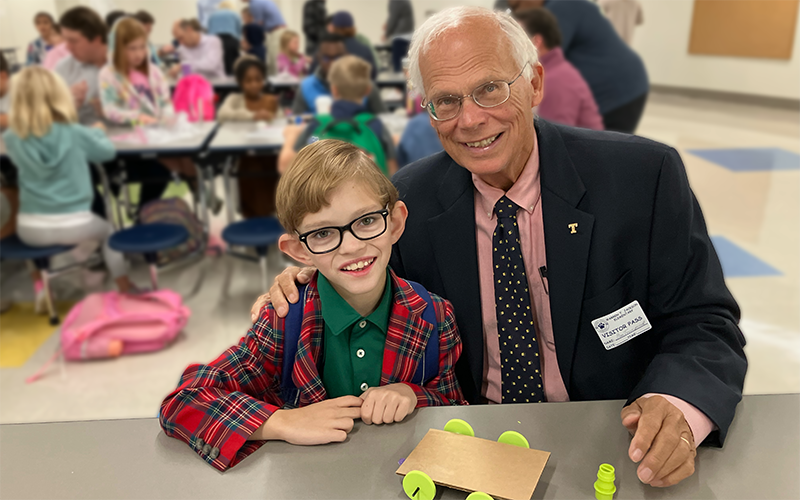Fashion Forward
By: Kelley Freund | Categories: Alumni Interest

Architect Elaheh Demirchelie is working to do just that. In February, Demirchelie, Arch 09, MS Arch 14, with the scientific expertise of two other alumni, launched a sustainable fashion brand. LEONOEL, featuring clothing for men (LEON) and women (NOEL), as well as a neutral line (N), merges design, science, and technology to achieve the smallest environmental footprint through the entire lifecycle of a garment.
DESIGNING FOR GOOD
But what does an architect know about fashion design? It turns out, quite a bit. When Demirchelie began studying architecture at Georgia Tech, she immersed herself in other creative disciplines as well, including poetry, art, and fashion. And when she began her career in architecture, working her way up to chief creative officer for the award-winning firm Mark Cavagnero Associates in San Francisco, she began to see her role as taking on some of the global issues that challenge our world. When Demirchelie started her own architecture and design agency in 2018, she aimed for her practice to focus on these issues through the lens of architecture and product design.
A couple years ago, Demirchelie set out to use her design skills to make a small batch of shirts for a 10-year-old relative. She noticed there was a large price difference between polyester, cotton, and organic cotton, and was curious to know why. So, she began doing some research.

Demirchelie was stunned. After spending 14 years engaged in sustainable design, how did she not know about this?
“I had this new architecture studio, I had been trying to win architecture projects, and all of a sudden that’s on hold,” Demirchelie says. “I’m researching all these things about the fashion industry. I was looking at it so much that after a few weeks, I thought, ‘I have to go see this firsthand.’”
So Demirchelie applied for a business visa to China and visited everyone from manufacturers to suppliers. When she returned, she looked at the world’s top sustainable fashion brands and discovered that most of them missed out on a portion of sustainability: for example, their products would be made with organic cotton with no organic certifications. All this research led to one simple question: how can fashion companies achieve the smallest environmental footprint through the entire lifecycle of a garment?
AN INTERDISCIPLINARY SOLUTION
After earning his PhD, Shafei worked as a research scientist with the Swiss Federal Institute of Aquatic Science and Technology, one of the largest water research institutions in the world, before eventually moving to Houston to start his own company, AquaNRG.
The organization offers data-driven and physics-chemistry software platforms and hardware infrastructure for environmental and energy companies. (AquaNRG has been awarded three Small Business Innovation Research grants from the United States Department of Energy and National Science Foundation totaling $1.4 million.)
Sustainability is a vague concept and is difficult to quantify. But Shafei had developed different models for calculating environmental impact while a student at Georgia Tech. The “calculator” takes the three components of sustainability—environmental, social, and economic—and quantifies them with a popular mathematical and engineering method called a fuzzy algorithm.

“The premise of this methodology is that it translates these vague concepts of sustainability to numbers,” Shafei says. “At the end what we have is one number that makes decision making much easier, faster, and really allows us to design better products.”
Shafei decided his former PhD classmate, Kristen Mitchell, MS EAS 11, would also be useful in launching LEONOEL. Mitchell, before she was a political appointee under the Obama Administration and an environmental policy advisor for various companies, spent six weeks sailing from San Diego to Honolulu, studying pollution in the ocean by collecting and counting plastic. After the research trip, Mitchell successfully completed a PhD in geoscience.
WHAT’S IN A LABEL?
Both LEONOEL’s compostable and biodegradable collections consist of organic and natural fibers, such as organic cotton (the company works with suppliers who hold the Global Organic Textile Standard, which limits the use of chemical inputs during the production process).
Each garment comes with a tag that illustrates the sustainability journey the garment has taken from seed to disposal. This transparency to consumers was important to Demirchelie, as during her early research for the company, she often found that the word “sustainable” was used as a marketing strategy.
“I don’t think anyone should go shopping and buy something that is called sustainable and not know how it’s sustainable,” she says.
A LEONOEL tag includes the fabric composition, the dye process (whether it’s undyed, vegetable dyed, or non-toxic dyed), and the disposal process. Depending on the dye, a garment can be used for household compost or placed in a commercial compost bin at the end of its life cycle.
As the company builds up business over the next year, LEONOEL’s next step will be inserting affordability in its model to fit the income level of the average American household, and hopefully in the process, overcome the issue of fashion waste. LEONOEL has decided to pre-sell clothes to customers at wholesale prices and plans to include their preferences in the design process prior to selecting the styles they end up manufacturing. This approach allows the company to create 100 percent sustainable pieces at affordable prices with no overproduction.
Demirchelie hopes the work she is doing with LEONOEL can initiate a larger conversation and help spur a new methodology in the fashion industry. “The role of an architect as I’ve understood it is using the design capabilities we have to solve real-world issues,” she says. “That’s becoming more relevant, with all the problems we’re dealing with in the world today. LEONOEL is the byproduct of that belief—that science and design in a multidisciplinary approach can offer holistic solutions to our everyday problems.”


